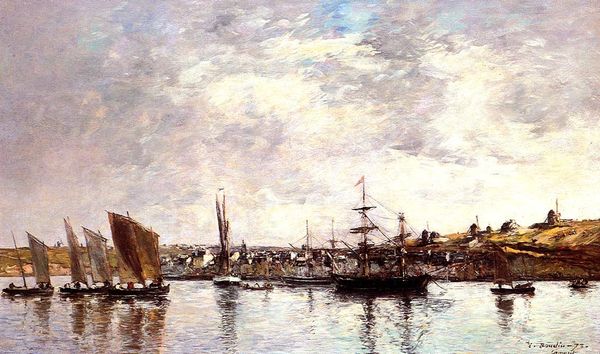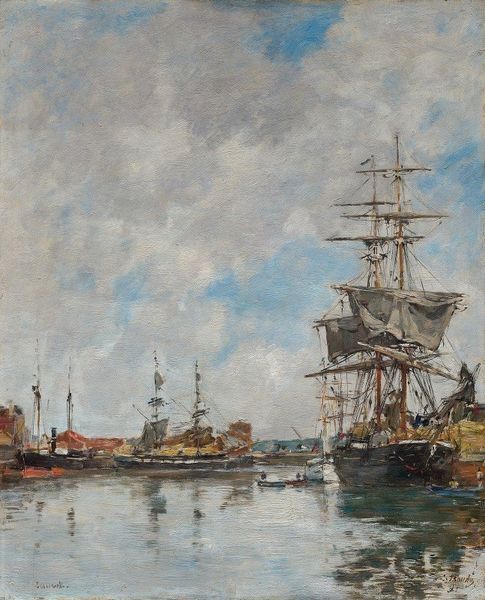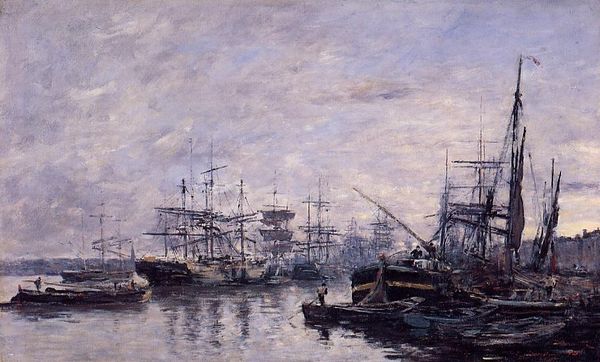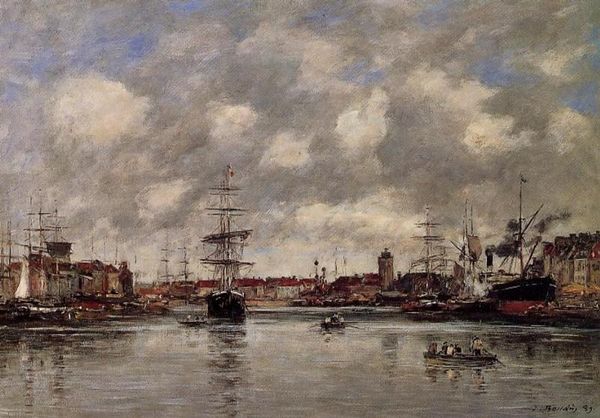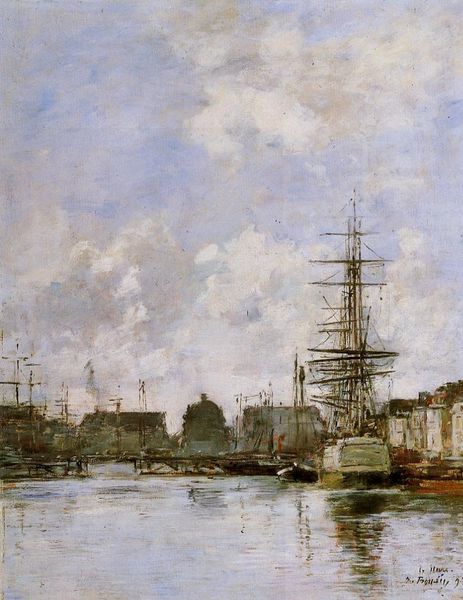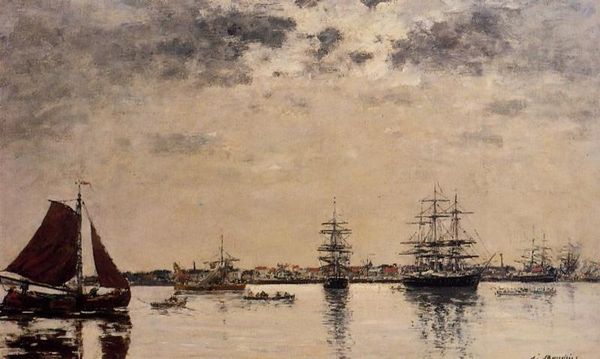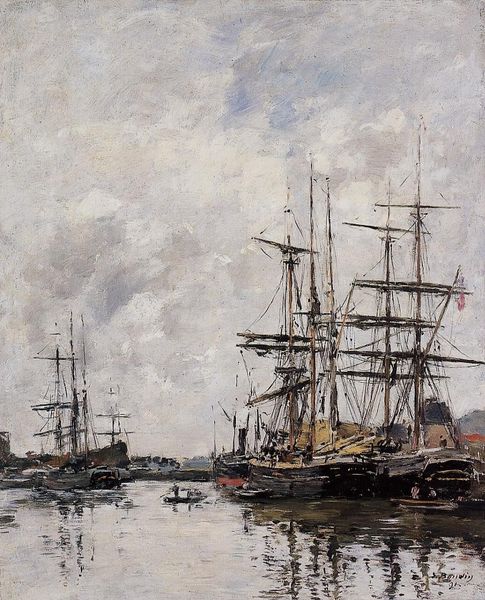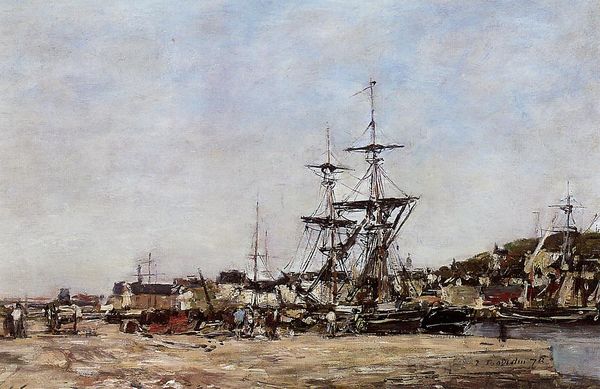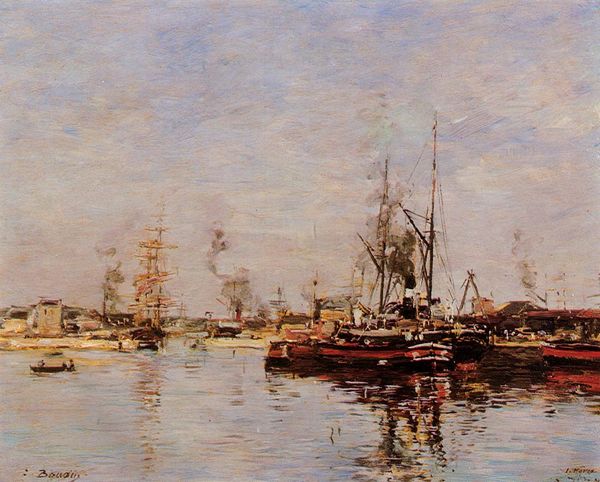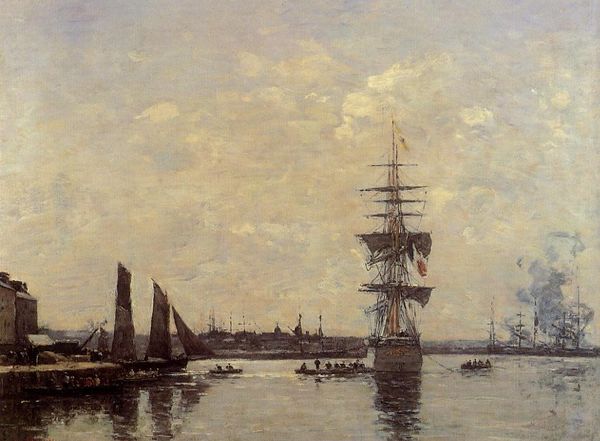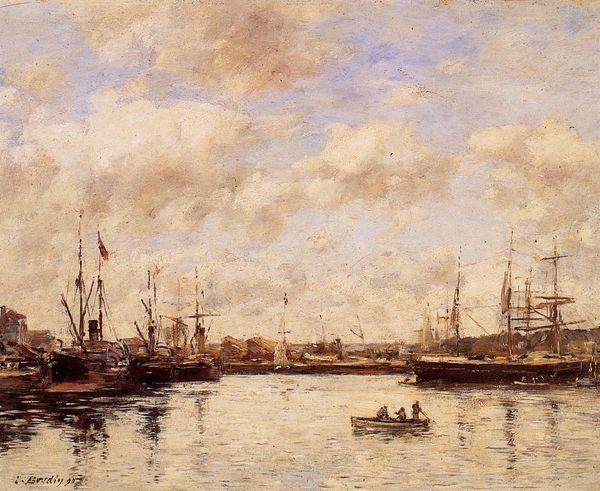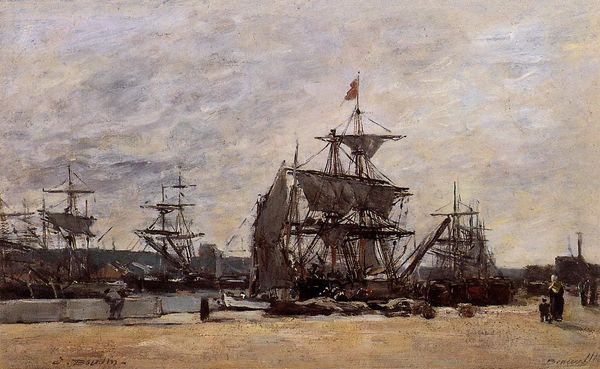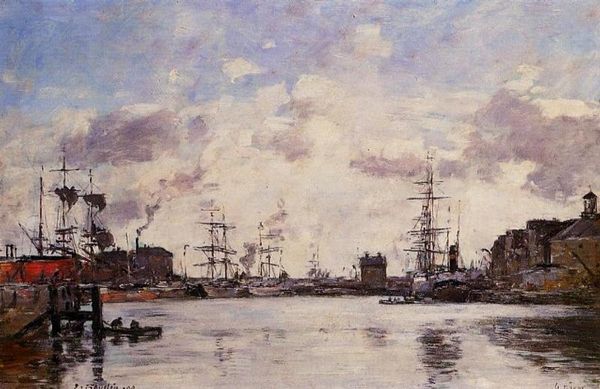
painting, plein-air, oil-paint
#
boat
#
ship
#
painting
#
impressionism
#
impressionist painting style
#
plein-air
#
oil-paint
#
vehicle
#
landscape
#
impressionist landscape
#
oil painting
#
water
#
cityscape
#
realism
Copyright: Public domain
Editor: This is Eugène Boudin's "Dunkirk, the Inner Port," an 1889 oil painting. I'm really drawn to the stillness of the water despite the activity of the port, but I’m wondering what exactly Boudin was trying to capture. How do you interpret this work? Curator: I see this piece as deeply embedded within the political and social climate of its time, reflecting France's relationship to its maritime power and colonial ambitions. Boudin's Impressionistic style softens the harsh realities of a bustling port, potentially glossing over the labor and social inequalities inherent in such a space. Does the scene invite viewers to reflect on the lives of the people who were engaged in labor? Editor: I hadn’t considered the perspective of the laborers at all, I was so focused on the visual impression! So you are saying that an idyllic impression can obscure the real lives involved. Curator: Exactly. It begs the question: whose perspective is centered? The painting certainly speaks to industrial progress, but from what vantage point? Consider that maritime settings were frequently deployed in service of colonialism, whether deliberately or accidentally. It can make one think about globalization's long history. What social histories get erased with an art style defined by ephemeral experiences? Editor: I think I see what you mean. The focus on light and atmosphere almost romanticizes the port, distracting from any critical examination of its social functions. So, it can unintentionally remove questions of agency for those actually doing work. Curator: Precisely. It's an invitation to examine how aesthetics and social realities intersect and at what price. Ultimately, this provokes me to remember that the past wasn't really like this for everyone. Editor: That makes me look at the painting in a whole new way. It’s less about a pretty picture and more about understanding the complexities of history and power. Thanks for your time.
Comments
No comments
Be the first to comment and join the conversation on the ultimate creative platform.
